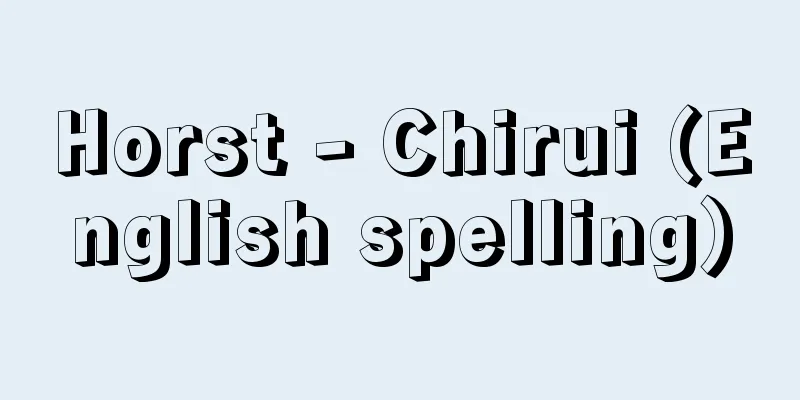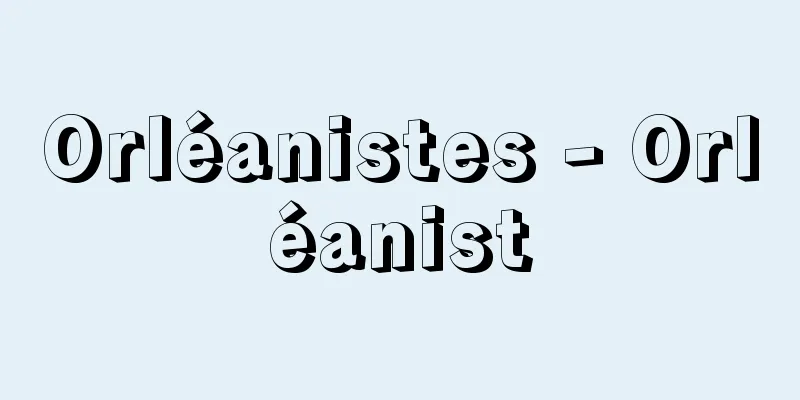biopsy

|
(1) Peripheral nerve biopsy ) The sural nerve is generally chosen for peripheral nerve biopsy. The sural nerve is composed of axons of primary sensory neurons, whose cell bodies are located in the 4th and 5th lumbar spinal cord and the 1st and 2nd sacral spinal cord dorsal root ganglia, and sympathetic postganglionic neurons. It is a cutaneous nerve that branches off from the sciatic nerve and common peroneal nerve, runs from the posterior surface of the lower leg, around the posterior part of the lateral malleolus, and reaches the lateral dorsum of the foot. The reasons for choosing the sural nerve can be summarized as follows: 1) it does not contain motor nerves in humans, so it does not cause motor paralysis after surgery; 2) it is located in the distal part of the lower leg and is easily affected by various neuropathies (i.e., symptoms are likely to appear); 3) it has few anatomical abnormalities; 4) it can be compared with sensory nerve conduction tests; and 5) there is an accumulation of past cases, making it easy to compare and contrast. The specimen is taken by making a 3-4 cm vertical incision posterior to the lateral malleolus, approximately two finger widths above the upper edge of the lateral malleolus, midway between the Achilles tendon. Details of the biopsy are described elsewhere, but it is also possible to biopsy the peroneus brevis muscle through the same incision. When preparing specimens of the isolated sural nerve, regular paraffin embedding is insufficient; it is necessary to prepare at least two types of specimens: an Epon embedding (which can be used to prepare both toluidine blue staining for light microscopy and ultrathin sections for electron microscopy) and a dissected specimen. In particular, Epon-embedded sections stained with toluidine blue result in beautiful myelin sheath staining, and are currently the international standard for light microscopic observation of peripheral nerves. a. Sural nerve biopsy findings It should always be kept in mind that the information obtained from a sural nerve biopsy is changes in axons and myelin sheaths near the distal ends of primary sensory neurons and sympathetic postganglionic nerves. All myelinated fiber components of the sural nerve are sensory fibers, and in healthy adults, the myelinated fiber density is approximately between 6,000 and 10,000/ mm2 . The diameter distribution histogram shows a bimodal distribution of large fibers (diameter 7-12 μm) and small fibers (diameter 1-4 μm). The unmyelinated fiber components are composed of sensory fibers and sympathetic postganglionic fibers (the ratio is said to be about 7:3), and the diameter of each fiber is between 0.1 and 2.0 μm. In healthy adults, the unmyelinated fiber density is often between approximately 20,000 and 40,000/ mm2 , and the diameter distribution histogram shows a unimodal distribution with a peak around 0.8 to 1.2 μm. Axonal degeneration and demyelination are the typical pathological processes of neuropathy (Figure 15-4-21). In acute axonal degeneration, the prominent changes are the occurrence of numerous myelin ovoids, while in chronic axonal degeneration, the prominent changes are a decrease in the density of myelinated fibers. In acute demyelination, the prominent changes are naked axons and images of macrophages phagocytosing myelin (the axons are preserved, unlike myelin spheres), while in chronic recurrent demyelination, the prominent pathological changes are thin myelinated fibers and onion bulb formation. In inflammatory neuropathies such as chronic inflammatory demyelinating polyradiculoneuropathy (CIDP), cell infiltration into the endoneurial sheath may be observed. In addition, edema of the endoneurial sheath is frequently observed, indirectly suggesting the presence of inflammation. b. Diseases for which sural nerve biopsy is indicated The diseases for which peripheral nerve biopsy has great diagnostic value and should always be kept in mind are as follows: i) Ischemic neuropathy associated with vasculitis Small arteries are the main site of lesions in vasculitis associated with various collagen diseases. Since arteries of this size are the terminal arteries for peripheral nerve trunks, occlusion due to inflammation leads to infarction of the peripheral nerves and the development of neuropathy. HE staining of paraffin-embedded specimens is suitable for observing fibrinoid degeneration of small arteries and cellular infiltration around blood vessels, and van Gieson staining is added to confirm the presence or absence of rupture of the elastic lamina, another important finding of vasculitis. Vasculitis is not uniformly present in all small arteries in a specimen. If no clear findings are obtained in a single specimen, it is necessary to cut as many blocks as possible to search for vasculitis. It is often the case that findings of vasculitis are only observed in the peroneus brevis muscle collected at the same time. Since the basic lesion of this disease is acute or subacute axonal degeneration, myelinated fibers have a large number of myelin globules along with a decrease in density. In neuropathy due to vasculitis, the degree of lesion often varies from nerve bundle to nerve bundle and even within the same nerve bundle depending on the location. This is easily understood if one considers it to be a mixture of areas that have become infarcted due to occlusion of the nutrient vessels and areas that have not become infarcted, and is an important pathological finding that serves as indirect evidence of the presence of vasculitis. ii) Sarcoid neuropathy It is said that peripheral neuropathy occurs in approximately 5% of cases of sarcoidosis, but diagnosis is difficult when neuropathy is the only symptom. Biopsy often reveals sarcoid nodules in the epineurium. In this case, simultaneous biopsy of the peroneus brevis muscle is also useful. iii) Amyloid neuropathy ) Amyloidosis that shows peripheral neuropathy is the AL type and familial amyloid polyneuropathy (FAP). Because peripheral nerve trunks are one of the sites where amyloid is likely to deposit, the diagnostic significance of peripheral nerve biopsy for this disease remains high, and the diagnosis can be confirmed by staining the amyloid material red with Congo red staining, observing the amyloid material emitting green/orange polarized light under a polarized light microscope, and confirming amyloid fibrils under an electron microscope. At the same time, it is often the case that amyloid is observed only in the biopsied peroneus brevis muscle or skin. A notable feature is the selective loss of small myelinated and unmyelinated fibers, which is a pathological finding that matches the autonomic neuropathy and decreased temperature and pain sensation seen clinically in this disease. iv) Hansen's disease Hansen's disease is still an important cause of severe neuropathy in developing countries. It is not uncommon for sensory nerve damage to be so severe that nerve fibers in the sural nerve are completely lost. Mycobacterium leprae is present in the nerve bundles. These lesions may be observed, and light and electron microscopic observation using acid-fast staining is necessary. v) Other diseases Although its diagnostic value is somewhat lower than the above four diseases, highly specific changes are often seen in CIDP, neuropathy due to n-hexane poisoning, giant axonal neuropathy, hereditary neuropathy with liability to pressure palsies (HNPP), Fabry disease, and Krabbe disease. c. Complications of sural nerve biopsy Total anesthesia in the area controlled by the sural nerve is inevitable, but the extent of this loss varies from case to case, and in some cases it may be barely noticeable. Dyck et al. (1992) conducted a survey of patients one year after biopsy and noted that 60% were asymptomatic, 30% still had mild discomfort or abnormal sensations, and 10% developed severe abnormal sensations or paresthesias that bothered the patient. Nerves do not regenerate once removed. The suitability of a biopsy is a test that should be performed only after careful consideration has been given to the patient, and the possibility of postoperative complications has been fully explained to the patient. (2) Muscle biopsy Skeletal muscles are distributed throughout the body, so it is possible to biopsy any muscle, but it is generally preferable to take samples from muscles that are abundant, easy to approach, and are commonly biopsied. For this reason, muscles such as the biceps brachii, deltoid, rectus femoris, vastus lateralis, tibialis anterior, and gastrocnemius are often selected. The peroneus brevis muscle is also often selected, as it can be sampled at the same time as the nerve biopsy mentioned above. If the patient complains of severe muscle pain or pain when grasping a muscle, it is also necessary to sample the fascia. After the biopsy, the fascia must be sutured closed. The site for biopsy should be decided after careful consideration. It is common to select areas with mild to moderate disease where muscle weakness or atrophy is not significant, and positive findings may not be obtained from areas with normal muscle strength. On the other hand, when an area with significant muscle weakness or atrophy is selected, most of the muscle fibers have been replaced by fat and connective tissue, and it is often the case that the necessary information cannot be obtained. In addition to manual muscle testing, visual inspection, and palpation, information from electromyograms and muscle CT is essential . Furthermore, when polymyositis or dermatomyositis is suspected, muscle MRI is useful, as it can be used to detect areas where inflammation is likely to be pathologically proven ( T2 It is possible to identify areas of high signal intensity. a. Muscle biopsy findings As with nerve biopsies, regular formalin-fixed paraffin specimens are useful only for certain diseases, such as myositis (including vasculitis), sarcoidosis, and amyloidosis. Frozen specimens and observation using electron microscopes are the international standard. i) Frozen specimens ) HE stained specimen: This is the most basic and important staining method, and it is no exaggeration to say that 80% of diagnoses can be made with a single frozen HE specimen (Figure 15-4-22). Observe the presence or absence of muscle size irregularities and the shape of the atrophied muscle. Generally, myogenic atrophic fibers are circular, while neurogenic atrophic fibers are keratinized (angular fiber). In neurogenic atrophy, small keratinized fibers often form groups (grouped atrophy), while in rapid muscle atrophy such as amyotrophic lateral sclerosis, small group atrophy is seen, and in slower muscle atrophy such as Charcot-Marie-Tooth disease and cervical spondylosis, large group atrophy is seen. In myositis, in addition to cellular infiltration, necrotic and regenerating muscle fibers are seen. Necrotic fibers have a pale eosin red color and are phagocytosed by macrophages, while regenerating fibers are basophilic and have large, prominent nuclei. Atrophy of muscle fibers around the muscle bundles (perifascicular atrophy) is an important finding that suggests dermatomyositis. In muscular dystrophy, necrotic regeneration of muscle fibers, interstitial proliferation and fatty changes are observed, and many opaque fibers that are hypercontracted and stain dark are observed. The presence or absence of sarcoid nodules and vasculitis is also important in HE. This can be confirmed by staining. 2) Modified Gomori trichrome method : Mitochondria and lysosomes stain red, making this useful for diagnosing mitochondrial diseases in which abnormal mitochondria accumulate. In this disease, numerous ragged red fibers are observed. Rimmed vacuoles, which are observed in distal myopathy, are also observed. ) and nemaline bodies seen in nemaline myopathy can also be observed using this staining method. 3) Myosin ATPase stained specimen: Used to distinguish muscle fiber types. Fibers that stain when pretreated at around pH 10.5 are called type 2 fibers, and fibers that do not stain are called type 1 fibers. Type 2 fibers correspond to white muscle (fast muscle), and type 1 fibers correspond to red muscle (slow muscle). In normal muscles, type 1 and type 2 fibers are arranged alternately (checkerboard pattern), but in long-term neurogenic muscular atrophy, muscles are clustered together in a manner disproportionate to one type or the other, a condition known as fiber type grouping (Figure 15-4-22B). Muscle atrophy limited to type 1 fibers (type 1 atrophy) is relatively specific to myotonic dystrophy, whereas muscle atrophy limited to type 2 fibers (type 2 atrophy ) is a non-specific finding that is observed in patients with myositis, disuse atrophy, and malnutrition. 4) Immunohistochemistry: It has now become indispensable for the diagnosis of muscular dystrophies. For example, abnormalities are seen in dystrophin staining in Duchenne muscular dystrophy and Becker muscular dystrophy; in the former, dystrophin is absent from the sarcolemma and is therefore not stained at all, while in the latter, dystrophin is stained patchily on the sarcolemma. In addition, specific antibodies against dysferlin, calpain, emerin, merosin, α-dystroglycan, etc. are commercially available and contribute to a definitive diagnosis. 5)Other: Commonly used staining methods include NADH-TR staining (to observe disorders inside myofibrils), PAS staining (to diagnose carbohydrate accumulation), and acetylcholinesterase staining (to observe the morphology of the neuromuscular junction). ii) Electron microscopy specimens Most muscle diseases can be diagnosed at the light microscopy level, but specific findings can be observed in a number of diseases, including inclusion body myositis (intranuclear and intracytoplasmic filamentous inclusions approximately 10 nm thick are observed), nemaline myopathy, and mitochondrial encephalomyopathy (abnormal mitochondria containing paracrystalline inclusions are observed). b. Indications for muscle biopsy Although muscle biopsy is of little value in diseases for which genetic diagnostic techniques from peripheral blood have been established (such as myotonic dystrophy), all muscle diseases are indications for muscle biopsy. In adults, inflammatory muscle diseases and mitochondrial diseases are important, and when the pediatric field is included, a huge variety of muscle diseases can be targeted by this procedure. c. Complications of muscle biopsy Skeletal muscle is an organ with a high regenerative capacity, and there are virtually no aftereffects from muscle biopsy. However, if compression hemostasis or rest is not adequate after muscle collection, a large localized hematoma can often form. It is also essential to be careful not to entangle large blood vessels or nerves when collecting the muscle or suturing at the end of the biopsy. [Kanda Takashi] ■References <br /> Takashi Kanda: Peripheral nerve diseases. Color atlas of neuropathology (edited by Masanori Tomonaga and Riki Oketa), pp234-253, Asakura Publishing, Tokyo, 1992. Masaya Nonaka: Muscle Pathology for Clinical Use, 3rd ed., Nihon Iji Shinposha, 1999. Nobuyuki Oka: Color Atlas of Peripheral Nerve Pathology, Chugai Medical Publishing, Tokyo, 2010. Source : Internal Medicine, 10th Edition About Internal Medicine, 10th Edition Information |
|
(1) 末梢神経生検(nerve biopsy ) 末梢神経生検には一般的に腓腹神経(sural nerve)が選ばれる.腓腹神経は第4,5腰髄および第1,2仙髄後根神経節に細胞体をもつ第一次感覚ニューロンと,交感神経節後ニューロンの軸索からなり,坐骨神経・総腓骨神経から分岐して下腿後面から外踝後方をまわり,足背外側へと至る皮神経である.腓腹神経が選択される理由は,①ヒトでは運動神経を含まないため,術後に運動麻痺をきたさないこと,②下肢遠位部にあり,各種ニューロパチーで侵されやすい(つまり所見が出やすい)こと,③解剖学的破格が少ないこと,④感覚神経伝導検査との対比ができること,⑤過去の症例の蓄積があり,比較対照が容易であること,の5点に集約される. 外踝後方で外踝上縁より約2横指上方,アキレス腱との中間の部位に縦方向に3~4 cmの切開を加えて採取する.生検の詳細については他書にゆずるが,同一の切開創から短腓骨筋の生検も可能である.切離した腓腹神経の標本作製にあたっては通常のパラフィン包埋だけでは不十分で,エポン包埋(光顕用のトルイジンブルー染色と電顕用超薄切片の両方が作製できる)とときほぐし標本の2種類は最低作る必要がある.特に,トルイジンブルー染色を施したエポン包埋切片は美しい髄鞘染色となり,現在では末梢神経を光顕的に観察するにあたっての国際的標準である. a.腓腹神経生検所見 腓腹神経生検で得られる情報は,第一次感覚ニューロンおよび交感神経節後神経の遠位端に近い部分での軸索および髄鞘の変化であることを常に念頭におく.腓腹神経の有髄線維成分はすべて感覚線維であり,健常成人では有髄線維密度はほぼ6000~10000/mm2の間にある.直径分布ヒストグラムでは大径線維(直径7~12 μm)・小径線維(直径1~4 μm)の二峰性分布を示す.無髄線維成分は感覚線維と交感神経節後線維(割合は7:3程度といわれる)によって構成されており,個々の線維の直径は0.1~2.0 μmの間にある.健常成人では無髄線維密度はだいたい20000〜40000/mm2の間にあることが多く,直径分布ヒストグラムでは0.8〜1.2 μm近辺にピークをもつ一峰性分布を示す. 軸索変性と脱髄がニューロパチーの代表的な病的過程である(図15-4-21).急性の軸索変性であればミエリン球(myelin ovoid)の多発が,慢性の軸索変性であれば有髄線維密度の減少が前景に立った変化となり,急性の脱髄であれば髄鞘を有しない軸索(naked axon)やミエリンをマクロファージが貪食している像(軸索は保たれている点がミエリン球と異なる),慢性反復性の脱髄であれば髄鞘の菲薄な線維やオニオンバルブ(onion bulb)形成がそれぞれ主体となる病的変化となる.慢性炎症性脱髄性多発根神経炎(chronic inflammatory demyelinating polyradiculoneuropathy:CIDP)などの炎症性ニューロパチーでは,神経内鞘への細胞浸潤がみられることがある.また,神経内鞘の浮腫が高頻度に観察され,間接的に炎症の存在を示唆する. b.腓腹神経生検が適応となる疾患 末梢神経生検が診断的に大きな価値を有し,常にその適応を念頭におくべき疾患は以下のとおりである. ⅰ)血管炎に伴う虚血性ニューロパチー 各種膠原病に伴う血管炎では小動脈が病変の主座となる.この大きさの動脈は末梢神経幹にとっては終動脈であるため,炎症によって閉塞すると末梢神経の梗塞をきたし,ニューロパチーを発症する.小動脈のフィブリノイド変性や血管周囲の細胞浸潤を観察するにはパラフィン包埋のH-E染色が適しており,血管炎のもう1つの重要な所見である弾性板の破綻の有無を確認する目的でvan Gieson染色などを追加する.血管炎は検体内のすべての小動脈に一様に存在するわけではない.1枚の標本で明らかな所見が得られなかった場合は可能な限り多数のブロックを切って血管炎を探す必要がある.同時に採取した短腓骨筋にのみ血管炎の所見が認められることもしばしば経験する. 本症は急性ないし亜急性の軸索変性が基本的病変であるので,有髄線維は密度の減少とともに多数のミエリン球を認める.血管炎に基づくニューロパチーでは神経束ごとに,また,同一神経束内でも部位によって病変の程度に差があることが多い.これは,栄養血管の閉塞によって梗塞に陥った部位と梗塞を免れた部位の混在と考えれば理解しやすく,血管炎の存在の間接的な証拠となる重要な病理所見である. ⅱ)サルコイドニューロパチー (sarcoid neuropathy ) サルコイドーシスの約5%に末梢神経障害を合併するといわれているが,ニューロパチーのみが症状の場合の診断は難しい.生検で神経上膜にサルコイド結節がみつかることがしばしばある.この場合も短腓骨筋の同時生検は有用である. ⅲ)アミロイドニューロパチー (amyloid neuropathy ) 末梢神経障害を示すアミロイドーシスはAL型と家族性アミロイドポリニューロパチー(familial amyloid polyneuropathy:FAP)である.末梢神経幹はアミロイドの沈着しやすい部位の1つであるため本症での末梢神経生検の診断的意義はいまだに高く,Congo-red染色で赤染し,偏光顕微鏡でグリーン/オレンジ色の偏光を放つアミロイド物質を光顕的に認め,電顕でアミロイド細線維を確認すれば診断が確定する.同時に生検した短腓骨筋や皮膚にのみアミロイドが観察されることもしばしば経験する.小径有髄線維と無髄線維が選択的に脱落するのが大きな特徴で,これは本症で臨床的にみられる自律神経障害や温痛覚の低下と合致する病理所見といえる. ⅳ)Hansen病 発展途上国ではいまだに重症ニューロパチーの重要な原因疾患である.感覚神経の障害がきわめて強く,腓腹神経内の神経線維がまったく消失してしまうような例もまれではない.神経束内にMycobacterium leprae を認めることがあり,抗酸菌染色による光顕的観察と電顕的観察が必要である. ⅴ)その他の疾患 上記の4疾患に比べると診断的な価値はやや落ちるが,CIDP,n-ヘキサン中毒によるニューロパチー,巨大軸索性ニューロパチー,遺伝性圧脆弱性ニューロパチー(hereditary neuropathy with liability to pressure palsies:HNPP),Fabry病,Krabbe病などで特異性の高い変化がみられることが多い. c.腓腹神経生検の合併症 腓腹神経支配領域の全感覚脱失は必発であるが,その範囲は症例により異なり,ほとんど関知できないような場合もある.Dyckら(1992)は生検施行1年後の患者について調査を行っているが,60%は無症状,30%に軽度の違和感・異常感覚が残存し,10%に患者を悩ますような強い異常感覚・錯感覚が出現したと記載している.いったん切除した神経は再生しない.生検の適応については十分に検討を加えたうえで,術後合併症の可能性についても患者に十分に説明したうえで行うべき検査法である. (2) 筋生検(muscle biopsy) 骨格筋は全身に分布しているのでどの筋からも生検は可能であるが,一般的には筋量が豊富でアプローチしやすく,また,通常生検が頻繁に行われる筋からの採取が望ましい.この点から選択されるのは上腕二頭筋,三角筋,大腿直筋,外側広筋,前脛骨筋,腓腹筋などである.上述の神経生検時に同時に採取可能な短腓骨筋もよく選択される.筋痛や筋把握痛を強く訴える場合はあわせて筋膜の採取も必要である.生検終了後は必ず筋膜を縫合閉鎖する. 生検部位の決定は十分な検討を加えて決定する.筋力低下や筋萎縮があまり著明でない軽度から中等度の罹患部を選択するのがふつうで,筋力正常部位からは陽性所見が得られないことがあり,一方,筋力低下・筋萎縮がきわめて著明な部位を選択すると筋線維がほとんど脂肪や結合織に置換され,必要な情報が得られないこともしばしば経験する.徒手筋力テスト,視診,触診に加えて筋電図・筋CTからの情報が必須である.また,多発筋炎・皮膚筋炎を疑う場合は筋MRIが有用で,炎症所見が病理学的に証明される可能性が高い部位(T1高信号を伴わないT2 高信号領域)を特定することが可能となる. a.筋生検所見 神経生検と同様,通常のホルマリン固定パラフィン標本が有用であるのは筋炎(血管炎を含む),サルコイドーシス,アミロイドーシスなど一部の疾患に限られる.凍結標本と電顕標本による観察が国際標準である. ⅰ)凍結標本 )H-E染色標本: 最も基本的かつ重要な染色法で,診断の80%は1枚の凍結H-E標本でつくといっても過言ではない(図15-4-22).筋の大小不同の有無,萎縮筋の形状を観察する.一般に筋原性萎縮線維は円形を,神経原性萎縮線維は角化した形(angular fiber)をとる.神経原性の萎縮では小角化線維の集簇が起こることが多く(grouped atrophy),筋萎縮性側索硬化症のような急速な筋萎縮では小群集萎縮が,Charcot-Marie-Tooth病や頸椎症のようなゆっくりとした過程では大群集萎縮がみられる.筋炎では細胞浸潤のほか,筋線維の壊死再生がみられる.壊死線維はエオジンの赤色が薄くなってマクロファージによる貪食が観察され,再生線維はbasophilicで核が大きく目立つという特徴を有する.筋束周辺部の筋線維の萎縮(perifascicular atrophy)は皮膚筋炎を示唆する重要な所見である.筋ジストロフィ症では筋線維の壊死再生や間質増生・脂肪化がみられ,過収縮して濃染する線維(opaque fiber)が多数観察される.サルコイド結節や血管炎の有無もH-E 染色で確認できる. 2)Gomoriトリクローム変法 (modified Gomori trichrome) : ミトコンドリアやライソゾームなどが赤く染まるので,異常ミトコンドリアの集積するミトコンドリア病の診断に有用である.本症では赤色ぼろ線維(ragged red fiber)が多数観察される.rimmed vacuole型遠位型ミオパチーに観察される縁どり空胞(rimmed vacuole )や,ネマリンミオパチーでみられるネマリン小体もこの染色法で観察される. 3)ミオシンATPase染色標本: 筋線維タイプの分別に用いられる.pH10.5前後の前処理を行ったときに染色される線維をタイプ2線維,染色されない線維をタイプ1線維という.タイプ2線維は白筋(速筋)に,タイプ1線維は赤筋(遅筋)に相当する.正常筋肉ではタイプ1線維・タイプ2線維は交互に配列している(checker-board pattern)が,長期にわたる神経原性筋萎縮では筋がどちらかのタイプにかたよって集簇し,fiber type groupingとよばれる(図15-4-22B).タイプ1線維に限局した筋萎縮(type 1 atrophy)は筋強直性ジストロフィに比較的特異的にみられるのに対し,タイプ2線維に限局した筋萎縮(type 2 atrophy )は非特異的所見で,筋炎,廃用性萎縮,低栄養などで観察される. 4)免疫組織化学: 筋ジストロフィ症の診断に現在では欠くことのできないものとなっている.たとえば,Duchenne型筋ジストロフィ症,Becker型筋ジストロフィ症ではジストロフィン染色で異常が認められ,前者ではジストロフィンが筋線維膜に欠損しているため全く染色されず,後者では筋線維膜上にまだらに染色される.このほかにもジスフェルリン,カルパイン,エメリン,メロシン,αジストログリカンなどに対する特異抗体が市販されており,診断確定に寄与している. 5)その他: NADH-TR染色(筋原線維内部の乱れを観察する),PAS染色(糖質の蓄積を診断する),アセチルコリンエステラーゼ染色(神経筋接合部の形態をみる)などが汎用される染色法である. ⅱ)電顕標本 ほとんどの筋疾患は光顕レベルで診断可能であるが,封入体筋炎(約10 nmの太さのフィラメント状の核内・細胞質内封入体が観察される),ネマリンミオパチー,ミトコンドリア脳筋症(異常ミトコンドリアとその内部に類結晶状封入体(paracrystalline inclusion)がみられる)をはじめとする多数の疾患で特異的な所見が観察される. b.筋生検の適応 末梢血からの遺伝子診断手技が確立している疾患(筋強直性ジストロフィなど)での意義は乏しいが,すべての筋疾患が筋生検の適応となる.成人で重要なのは炎症性筋疾患とミトコンドリア病であり,小児科領域を含めると膨大な種類の筋疾患が本手技の対象となる. c.筋生検の合併症 骨格筋は再生力に富む臓器であり,筋生検による後遺症は皆無といってよいが,筋肉採取後の圧迫止血や安静が十分でないと,局所に大きな血腫を形成することがしばしばある.筋肉の採取時や生検終了時の縫合の際に大きな血管や神経を巻きこまないようにする注意も必須である.[神田 隆] ■文献 神田 隆:末梢神経疾患.神経病理カラーアトラス(朝長正徳,桶田理喜編),pp234-253,朝倉書店,東京,1992. 埜中征哉:臨床のための筋病理,第3版,日本医事新報社,1999. 岡 伸幸:カラーアトラス末梢神経の病理,中外医学社,東京,2010. 出典 内科学 第10版内科学 第10版について 情報 |
>>: Cost of living index - cost of living index
Recommend
Ao
A district of Iga City in the mid-west of Mie Pre...
MIS diode - MIS diode
An abbreviation for metal insulator semiconductor ...
Ileus
Concept A condition in which the propulsion of int...
Ivy League
The Ivy League is a group of eight private univers...
Achiki
An ancient immigrant. An ancestor of the Achikinof...
Cherkessk
Batalpashinsk until 1937. Capital of the Karachay-...
Running suit - Running suit
This was one of the osso cases in the Edo period....
quô'c ngũ' (English spelling) quocngu
...Chu Nom records of Vietnamese literature date ...
Antipodes [Islands] - Antipodes
Located southeast of New Zealand, these uninhabite...
Ikarigaseki [village] - Ikarigaseki
A village in Minamitsugaru district, southern Aomo...
MCP (Optics)
... Night vision image intensifiers use high-sens...
Complete contract - Isshiki Ukeoi
This is a type of contract method that a building ...
James Bay - James Bay
It is a branch of Hudson Bay on the border betwee...
Gaburite pottery - Gaburite Touki
…Islamic art refers to the architecture, painting...
Malinke people - Malinke (English spelling)
A tribe living in West Africa across Guinea (1 mil...









